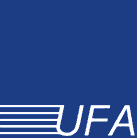Air traffic controllers at NAS Jacksonville train with new ATTower®

Air traffic controllers at NAS Jacksonville are increasing their proficiency thanks to a new tower simulator suite recently installed in Building 118.
“Like most professions today, air traffic controllers (ACs) are impacted by technology. Every year, there are more aircraft operating in NAS Jacksonville air space. On any given day, controllers may handle a potentially volatile mix of high-speed fighter jets along with lower-speed turboprop patrol planes and multi-mission helicopters,” said Air Traffic Control Facilities Officer Lt. Lance Breeding.
“They must also coordinate air space activity with Jacksonville International Airport, Cecil Field Airport, general aviation airfields and Outlying Landing Field Whitehouse.”
Steve Sessoms and Josh Cosgrove, air traffic control specialists with UFA Inc., installed the tower simulator suite in less than a week.
“This suite provides the latest 3D graphics along with simulated weather information, integrated radar displays and simulation of other key tower systems to provide the highest-fidelity training capability through a photo-realistic airfield database, said Sessoms.
“It also includes a voice recognition and response feature that trains controllers without the need for additional support staff who would normally pretend to be pilots.”
“At UFA, we use commercial off-the-shelf (COTS) equipment and technology to keep acquisition, installation and operational costs down,” said Cosgrove.
The system provides a 210-degree panoramic view of the station through seven monitors.
The simulator allows operators to choose from 360 degrees of view from the NAS Jax control tower. Features include a close-up binocular view, as well as night-vision capability.
Breeding said, “Sequencing is one of the biggest challenges that controllers face in a VFR (visual flight rules) environment. VFR requires a pilot to be able to see outside the cockpit, to control the aircraft’s altitude, navigate, and avoid obstacles and other aircraft. Sequencing involves taking an additional aircraft and fitting it into the traffic pattern for a particular airspace. After each training session, the instructor fills out an OJT critique sheet – and the controller gets to play back the scenario and view the correct procedures.”
Over all, the system works according to the Air Traffic Control Publication 7110.65 that contains all the Navy rules and regulations.
AC2 Jeremy Funk explained that the tower (and simulator) is populated by four positions: first is the ‘local controller’ responsibility for planes in the air; two is the ‘ground controller’ responsibility for taxiing aircraft; and three is the ‘data controller’ who coordinates with entities such as Jacksonville International airport and Cecil Field Airport; and fourth is the tower supervisor.
AC1 Ayanna Gregg said, “This simulator will only increase consistency within our ranks. There are times – especially during holidays – when our air operations volume is low. The simulator gives our controllers a venue to maintain their proficiency levels during periods of reduced activity.”
Breeding added, “These simulations are very realistic because they mimic our air traffic, air field facilities and local geography. The simulator view is much the same as working in our tower.
Whether it’s a P-8A, P-3C, C-130T, C-40A, MH-60R or transient aircraft – our controllers will now train to simulated 3D images that match the reality of the control tower environment.

.png)



.jpg)


Comments
There are no comments yet for this item
Join the discussion